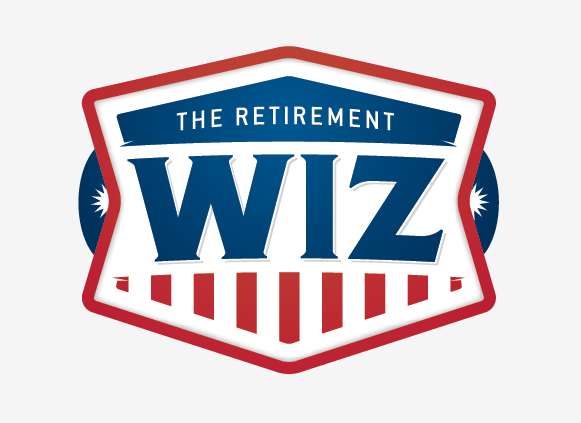Universal life insurance (often shortened to UL) is a type of permanent life insurance, primarily in the United States of America. Under the terms of the policy, the excess of premium payments above the current cost of insurance is credited to the cash value of the policy. The cash value is credited each month with interest, and the policy is debited each month by a cost of insurance (COI) charge, as well as any other policy charges and fees which are drawn from the cash value, even if no premium payment is made that month. Interest credited to the account is determined by the insurer, but has a contractual minimum rate. When an earnings rate is pegged to a financial index such as a stock, bond or other interest rate index, the policy is a "Equity Indexed Universal Life" contract.
Universal life is similar in some ways to, and was developed from, whole life insurance, although the actual cost of insurance inside the UL policy is based on annually renewable term life insurance. The advantage of the universal life policy is its premium flexibility and adjustable death benefits. The death benefit can be increased (subject to insurability), or decreased at the policy owner's request.
The premiums are flexible, from a minimum amount specified in the policy, to the maximum amount allowed by the contract. The primary difference is that the universal life policy shifts some of the risk for maintaining the death benefit to the policy owner. In a whole life policy, as long as every premium payment is made, the death benefit is guaranteed to the maturity date in the policy, usually age 95, or to age 121. A UL policy will lapse when the cash values are no longer sufficient to cover the cost of insurance and policy administrative expense.
To make UL policies more attractive, insurers have added secondary guarantees, where if certain minimum premium payments are made for a given period, the policy will remain in force for the guarantee period even if the cash value drops to zero. These are commonly called "No Lapse Guarantee" riders, and the product is commonly called guaranteed universal life (GUL, not to be confused with group universal life insurance, which is also typically shortened to GUL).
The trend up until 2007–2008 was to reduce premiums on GUL to the point where there was virtually no cash surrender values at all, essentially creating a level term policy that could last to age 121. Since then, many companies have introduced either a second GUL policy that has a slightly higher premium, but in return the policy owner has cash surrender values that show a better internal rate of return on surrender than the additional premiums could earn in a risk-free investment outside of the policy.
With the requirement for all new policies to use the latest mortality table (CSO 2001) beginning January 1, 2004, many GUL policies have been repriced, and the general trend is toward slight premium increases compared to the policies from 2008.
Another major difference between universal life and whole life insurances: the administrative expenses and cost of insurance within a universal life contract are transparent to the policy owner, whereas the assumptions the insurance company uses to determine the premium for a whole life insurance policy are not transparent.
Many people use life insurance, and in particular cash value life insurance, as a source of benefits to the owner of the policy (as opposed to the death benefit which provides benefit to the beneficiary). These benefits include loans, withdrawals, collateral assignments, split dollar agreements, pension funding, and tax planning.
Most universal life policies come with an option to take a loan on certain values associated with the policy. These loans require interest payments which are paid to the insurance company. The insurer charges interest on the loan because they are no longer able to receive any investment benefit from the money that has been loaned to you.
Repayment of the loan principal is not required, but payment of the loan interest is required. If the loan interest is not paid, it will be deducted from the cash value of the policy. If there is not sufficient value in the policy to cover interest, the policy will lapse.
Loans are not reported to any credit agency and payment or non-payment against them will not affect the policyholder's credit rating. If the policy has not become a "modified endowment", the loans are withdrawn from the policy values as premium first and then any gain. Taking Loans on UL will affect the long term viability of the plan. The cash values removed by loan are no longer earning the interest expected, so the cash values will not grow as expected. This will shorten the life of the policy. Usually those loans will cause a greater than expected premium payment as well as interest payments. Outstanding loans will be deducted from the death benefit at the death of the insured.
If done within IRS Regulations, an Equity Indexed Universal Life policy can provide income that is tax-free. This is done through withdrawals that do not exceed the total premium payments made into the policy. Also, tax-free withdrawals can be made through internal policy loans offered by the insurance company, against any additional cash value within the policy. (This income can exceed policy premiums and still be taken 100% tax-free.) If the policy is set up, funded and distributed properly, according to IRS regulations, an Equity Indexed UL policy could provide a lifetime of tax-free income. This can significantly outperform traditional investments such as stocks, bonds, mutual funds, CDs or annuities that are placed in taxable and tax-deferred accounts such as an IRA, 401(k) or 403(b).
Most universal life policies come with an option to withdraw cash values rather than take a loan. The withdrawals are subject to contingent deferred sales charges and may also have additional fees defined by the contract. Withdrawals will permanently lower the death benefit of the contract at the time of the withdrawal.
Withdrawals are taken out of premiums first and then gains, so it is possible to take a tax-free withdrawal from the values of the policy (this assumes the policy is not a MEC, i.e. "modified endowment contract"). Withdrawals are considered a material change and cause the policy to be tested for MEC. As a result of a withdrawal, the policy may become a MEC and could lose its tax advantages.
Withdrawing values will affect the long-term viability of the plan. The cash values removed by loan are no longer earning the interest expected, so the cash values will not grow as expected. To some extent this issue is mitigated by the corresponding lower death benefit.
Collateral assignments will often be placed on life insurance to guarantee the loan upon the death of debtor. If a collateral assignment is placed on life insurance the assignee will receive any amount due to them before the beneficiary is paid. If there is more than one assignee, the assignees are paid based on date of the assignment, i.e. the earlier assignment date gets paid before the later assignment date.
A Single Premium UL is paid for by a single, substantial, initial payment. Some policies do not allow any more than the one premium contractually, and some policies are casually defined as single premium because only one premium was intended to be paid. The policy remains in force so long as the COI charges have not depleted the account. These policies were very popular prior to 1988, as life insurance is generally a tax deferred plan, and so interest earned in the policy was not taxable as long as it remained in the policy. Further withdrawals from the policy were taken out principal first, rather than gain first and so tax free withdrawals of at least some portion of the value were an option. In 1988 changes were made in the tax code, and single premium policies purchased after were "modified endowment contract" (MEC) and subject to less advantageous tax treatment. Policies purchased before the change in code are not subject to the new tax law unless they have a "material change" in the policy (usually this is a change in death benefit or risk). It is important to note that a MEC is determined by total premiums paid in a 7-year period, and not by single payment. The IRS defines the method of testing whether a life insurance policy is a MEC. At any point in the life of a policy, a premium or a material change to the policy could cause it to lose its tax advantage and become a MEC.
In a MEC, the premiums and accumulation will be taxed just like an annuity upon withdrawing. The accumulations will grow tax deferred and will still transfer tax free to the beneficiary under Internal Revenue Service Code 101a under certain circumstances.
Fixed Premium UL is paid for by periodic premium payments associated with a no lapse guarantee in the policy. Sometimes the guarantees are part of the base policy and sometimes the guarantee is an additional rider to the policy. Generally these payments will be for a shorter period of time than the policy is in force; for example payments may be made for 10 years, with the intention that thereafter the policy is paid-up. But it can also be permanent fixed payment for the life of the policy.
Since the base policy is inherently based on cash value, the fixed premium policy only works if it is tied to a guarantee. If the guarantee is lost, the policy reverts to it flexible premium status. And if the guarantee is lost, the planned premium may no longer be sufficient to keep the coverage active. If the experience of the plan is not as good as predicted, the account value at the end of the premium period may not be adequate to continue the policy as originally written. In this case, the policyholder may have the choice to either:
- Leave the policy alone, and let it potentially expire early (if COI charges deplete the account), or
- Make additional or higher premium payments, to keep the death benefit level, or
- Lower the death benefit.
Many universal life contracts taken out in the high interest periods of the 1970s and 1980s faced this situation and lapsed when the premiums paid were not enough to cover the cost of insurance.
Flexible Premium UL allows the policyholder to vary their premiums within certain limits. Inherently UL policies are flexible premium, but each variation in payment has a long term effect that must be considered. In order to remain active, the policy must have sufficient available cash value to pay for the cost of insurance. Higher than expected payments could be required if the policyholder has skipped payments or has been paying less than originally planned. It is recommended that yearly illustrative projections be requested from the insurer so that future payments and outcomes can be planned.
In addition, Flexible Premium UL may offer a number of different death benefit options, which typically include at least the following:
a level death benefit (often called Option A or Option 1), or
a level amount at risk (often called Option B); this is also referred to as an increasing death benefit.
Policyholders may also buy Flexible Premium UL with a large initial deposit, thereafter making payments irregularly.
In the US it is illegal under the Investment Advisers Act of 1940 to offer Universal Life Insurance as an "investment" to individuals, but it is frequently offered by agents as a tax-advantaged financial vehicle from which they can borrow as needed later without tax penalties. This also makes it an alternative for individuals who are not able to contribute to a Roth IRA due to IRS income restraints.
It is illegal to market Index Universal Life (IUL) as an "investment security", as defined by the Securities Act of 1933 & the Securities Act of 1934. These Acts of Congress gave birth to the SEC, in reaction to the stock market crash of 1929 that led to the Great Depression. Today, the SEC oversees FINRA and they both regulate the marketing and sale of securities. IUL is an insurance product and does not meet the definition of a security, so it does not fall under the authority of the SEC or FINRA.
Therefore, under the authority of the SEC and FINRA, Index Universal Life Insurance cannot be marketed or sold as, a "security", "variable security", "variable investment" or direct investment in a "security" (or the stock market), because it is not. However, UL can be marketed and sold as an investment.
While term life insurance is the least expensive over a short period, say one to thirty years, permanent life insurance is generally the least expensive over a longer period, or over one's entire lifetime.
No-lapse guarantees, or death benefit guarantees: A well informed policyholder should understand that the flexibility of the policy is tied irrevocably to risk of the policyholder. The more guarantees a policy has, the more expensive its cost. And with UL, many of the guarantees are tied to an expected premium stream. If the premium is not paid on time, the guarantee may be lost and cannot be reinstated. For example, some policies will offer a "no lapse" guarantee, which states that if a stated premium is paid in a timely manner, the coverage will remain in force, even if there is not sufficient cash value to cover the mortality expenses. It is important to distinguish between this no lapse guarantee and the actual death benefit coverage. The death benefit coverage is paid for by mortality charges (also called cost of insurance). As long as these charges can be deducted from the cash value, the death benefit is active. The "no lapse" guarantee is a safety net that provides for coverage in the event that the cash value isn't large enough to cover the charges. This guarantee will be lost if the policyholder does not make the premium as agreed, although the coverage itself may still be in force. Some policies do not provide for the possibility of reinstating this guarantee. Sometimes the cost associated with the guarantee will still be deducted even if the guarantee itself is lost (those fees are often built into the cost of insurance and the costs will not adjust when the guarantee is lost). Some policies provide an option for reinstating the guarantee within certain time frames and/or with additional premiums (usually catching up the deficit of premiums and an associated interest). No-lapse guarantees can also be lost when loans or withdrawals are taken against the cash values.
This information is not intended to be tax or legal advice, and it may
not be relied on for the purpose of avoiding any federal tax penalties.
You are encouraged to seek tax or legal advice from an independent
professional advisor.


